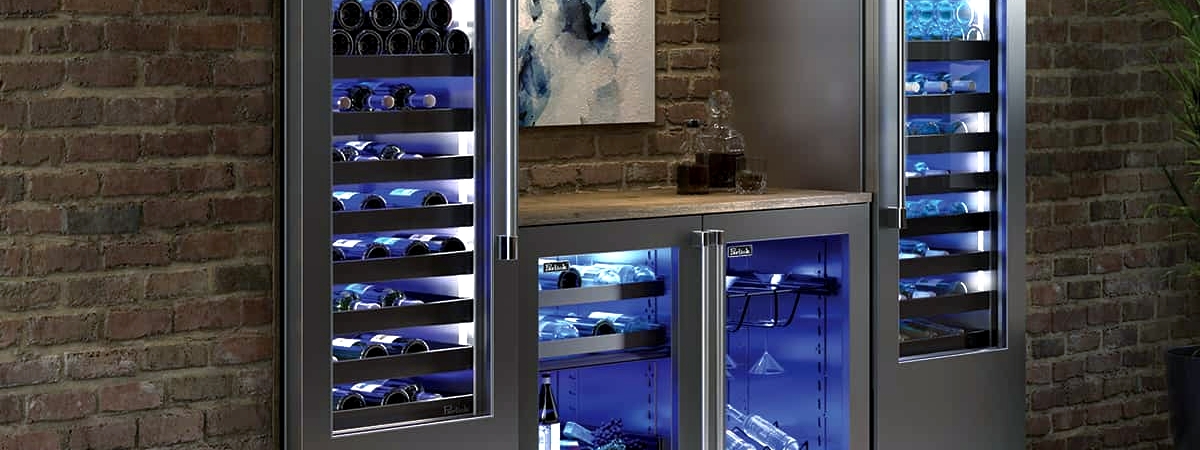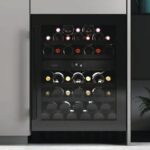Perlick Wine Cooler Electrical Component Failures
Post Date: June 28, 2024

Perlick wine coolers are renowned for their exceptional craftsmanship and ability to maintain precise temperature and humidity levels, creating an ideal environment for your treasured wine collection. However, like any appliance, they can sometimes experience issues that affect their performance, and electrical component failures are no exception. These failures can range from minor glitches to more serious problems that require professional attention.
Understanding the Electrical System
The electrical system in a Perlick wine cooler is a complex network of components that work together to power and regulate the cooling system, lighting, and other functions. Key components include:
-
Power Cord: The power cord connects the cooler to the mains electricity supply.
-
Circuit Breaker: The circuit breaker protects the cooler from electrical overloads by automatically tripping when excessive current is drawn.
-
Thermostat: The thermostat monitors the interior temperature and sends signals to the control board to regulate the cooling cycle.
-
Control Board: The control board is the “brain” of the electrical system, receiving input from the thermostat and controlling various components, including the compressor, fans, and lighting.
-
Compressor: The compressor is the heart of the cooling system, responsible for compressing and circulating refrigerant to maintain the desired temperature.
-
Fans: Fans circulate cool air inside the cooler, ensuring even temperature distribution.
-
Interior Lighting: Interior lights illuminate the cooler’s interior for easy visibility of your wine collection.
Causes of Electrical Component Failures
Several factors can contribute to electrical component failures in a Perlick wine cooler:
-
Power Surges and Fluctuations: Sudden spikes or drops in voltage can damage sensitive electrical components, such as the control board or compressor.
-
Loose Connections: Loose wiring connections can lead to arcing, overheating, and potential component failure.
-
Component Wear and Tear: Over time, electrical components can wear out and fail due to normal usage or manufacturing defects.
-
Moisture Damage: Exposure to excessive moisture can corrode electrical components, leading to malfunctions.
-
Pest Infestation: Insects or rodents may gnaw on wires or damage components, causing electrical issues.
DIY Troubleshooting Solutions
Before calling a professional technician, you can try some DIY troubleshooting steps to address potential electrical component failures:
-
Check Power Supply: Ensure the cooler is properly plugged into a working outlet and that the circuit breaker is not tripped.
-
Inspect Wiring Connections: Visually inspect the wiring connections for any signs of looseness, damage, or corrosion. Tighten loose connections and replace damaged wires.
-
Reset Circuit Breaker: If the circuit breaker is tripped, reset it and observe if the cooler powers on normally.
-
Check Interior Lighting: If the interior lights are not working, check the light bulbs for burnout and replace them if necessary.
-
Power Cycle: Unplug the wine cooler from the power source for 30 seconds, then plug it back in. This can sometimes reset the control board and resolve minor glitches.
Preventive Measures for Electrical System Health
To minimize the risk of electrical component failures and extend the lifespan of your Perlick wine cooler, follow these preventive measures:
-
Stable Power Supply: Connect the cooler to a dedicated outlet with a surge protector to safeguard it from power spikes and fluctuations.
-
Regular Maintenance: Schedule regular maintenance checks with a qualified appliance repair technician to identify and address potential issues early on.
-
Protect from Moisture: Avoid placing the cooler in areas with high humidity or near water sources.
-
Pest Control: Implement pest control measures to prevent insects or rodents from damaging electrical components.
-
Gentle Handling: Avoid moving or transporting the cooler frequently, as this can strain electrical connections.
When to Seek Professional Assistance
If you’ve tried the DIY troubleshooting steps and the electrical component failure persists, it’s advisable to contact a qualified appliance repair technician. They have the expertise and tools to diagnose the root cause of the problem, whether it’s a faulty component, a wiring issue, or a more complex electrical system malfunction.
By understanding the common causes of electrical component failures, implementing DIY troubleshooting steps, and following preventive measures, you can keep your Perlick wine cooler operating at its peak performance, ensuring your wine collection remains safe and well-preserved for years to come.








